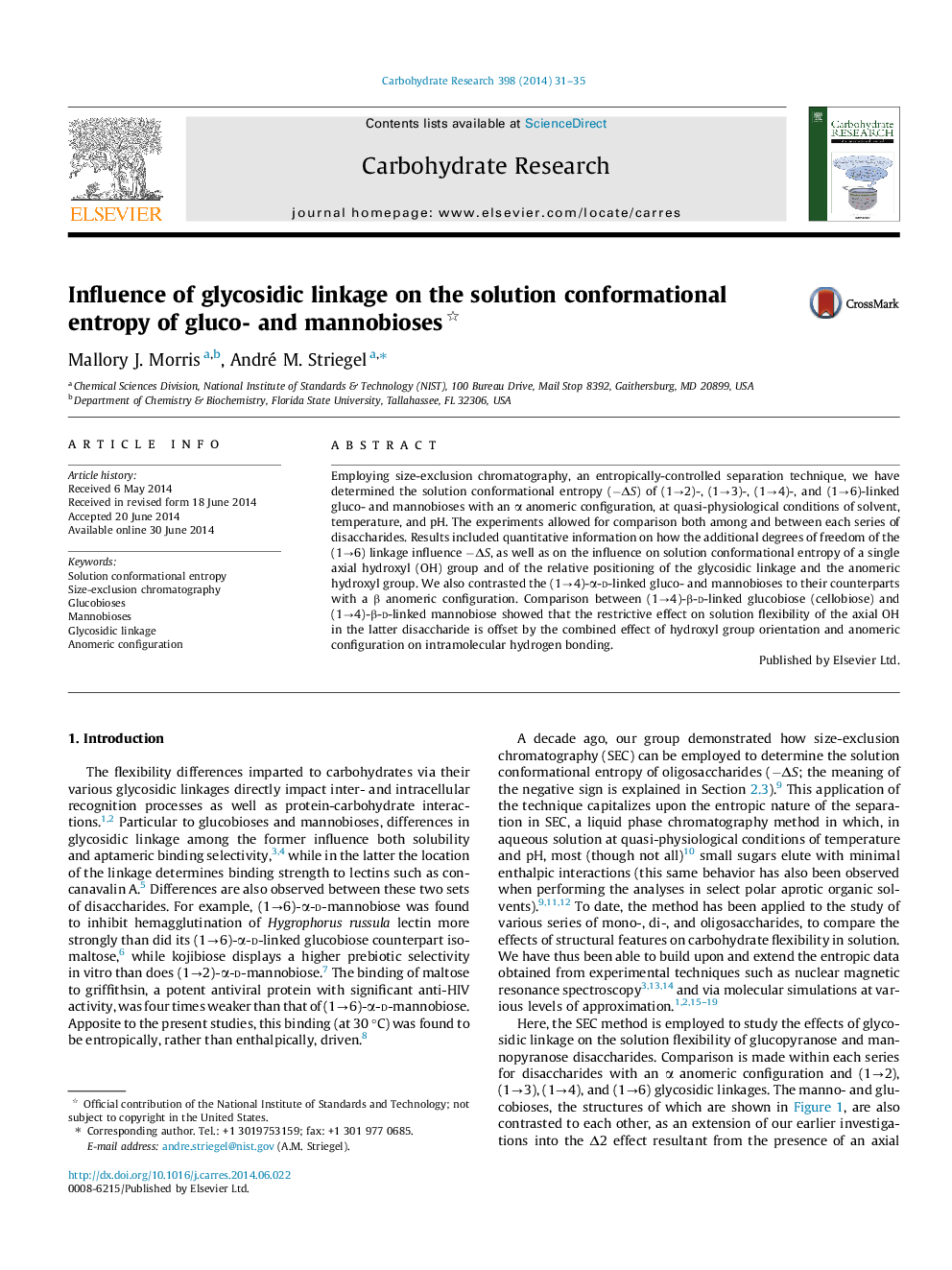| Article ID | Journal | Published Year | Pages | File Type |
|---|---|---|---|---|
| 1387620 | Carbohydrate Research | 2014 | 5 Pages |
•Solution flexibility of gluco- and mannobioses was determined by SEC.•Influence of glycosidic linkage on solution flexibility was studied.•Influence of anomeric configuration and intramolecular H-bonding was also studied.•Experimental results compared well to published molecular modeling data.
Employing size-exclusion chromatography, an entropically-controlled separation technique, we have determined the solution conformational entropy (−ΔS) of (1→2)-, (1→3)-, (1→4)-, and (1→6)-linked gluco- and mannobioses with an α anomeric configuration, at quasi-physiological conditions of solvent, temperature, and pH. The experiments allowed for comparison both among and between each series of disaccharides. Results included quantitative information on how the additional degrees of freedom of the (1→6) linkage influence −ΔS, as well as on the influence on solution conformational entropy of a single axial hydroxyl (OH) group and of the relative positioning of the glycosidic linkage and the anomeric hydroxyl group. We also contrasted the (1→4)-α-d-linked gluco- and mannobioses to their counterparts with a β anomeric configuration. Comparison between (1→4)-β-d-linked glucobiose (cellobiose) and (1→4)-β-d-linked mannobiose showed that the restrictive effect on solution flexibility of the axial OH in the latter disaccharide is offset by the combined effect of hydroxyl group orientation and anomeric configuration on intramolecular hydrogen bonding.
Graphical abstractFigure optionsDownload full-size imageDownload as PowerPoint slide
